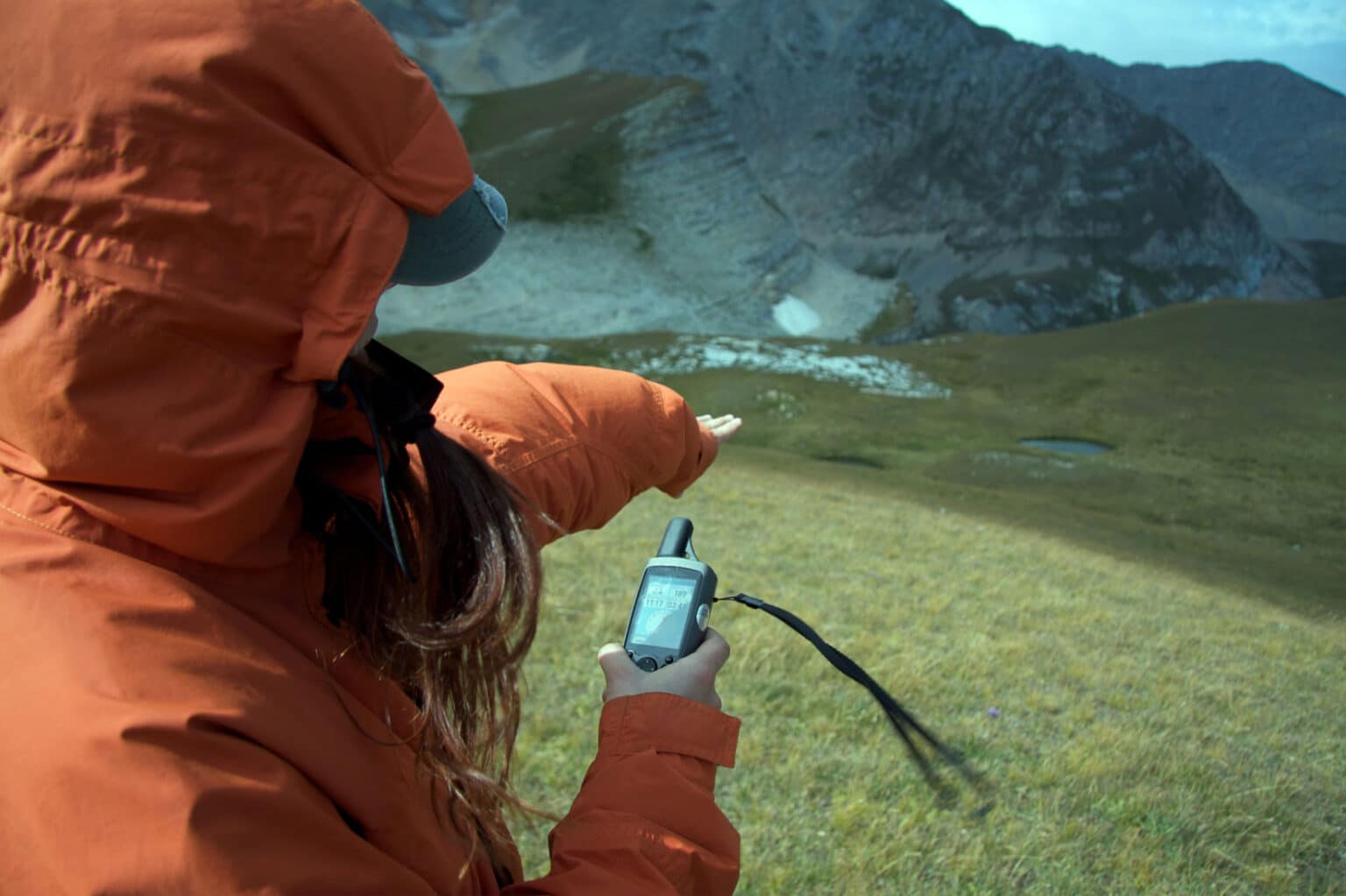

Have you ever found yourself completely lost in unfamiliar terrain with no cell signal and a dying phone? The feeling of disorientation in remote locations can quickly escalate from frustrating to downright dangerous. 🧭 I experienced this nightmarish situation firsthand during a backcountry hiking trip when my smartphone navigation failed at a critical junction between two unmarked trails.
Finding reliable navigation tools has become increasingly challenging with so many options flooding the market. 🌲 Many outdoor enthusiasts struggle with devices that lose satellite connection precisely when you need them most, creating potentially life-threatening situations in remote wilderness areas. My brother-in-law nearly spent a freezing night in the mountains because his budget GPS couldn’t maintain a signal under dense forest canopy.
The consequences of unreliable navigation can be horrifying – from missing your extraction point to wandering into dangerous wildlife territories. 🏔️ Imagine the panic of realizing you’ve been walking in the wrong direction for hours as daylight fades and temperatures drop. One wrong turn in certain environments can lead to exposure, dehydration, or worse.
Today’s advanced handheld GPS units offer solutions to these painful challenges with multi-constellation support, extended battery life, and rugged designs. 🔋 However, navigating through technical specifications and marketing claims to find the best 5 handheld GPSs that truly perform in critical situations requires expert guidance.
Let’s examine what separates truly reliable navigation tools from disappointing devices by exploring the essential evaluation criteria every outdoor adventurer should consider. 🧗♂️
Power Management
Devices were assessed for runtime during continuous use, power-saving features, and compatibility with external power sources or replaceable batteries.
Display Quality
Evaluation of screen size, resolution, brightness adjustment, sunlight readability, and glove-compatible touchscreen functionality in various conditions.
Navigation Features
Analysis of preloaded maps, subscription requirements, route calculation, track recording, compass accuracy, and off-trail navigation capabilities.
Weather Resistance
Testing for waterproofing rating, shock resistance, temperature tolerance, and overall build quality for long-term reliability in extreme conditions.
The Routexis Handheld GPS dominates the portable navigation market through its groundbreaking cellular-free design and professional-grade reliability. This compact powerhouse has established its reputation among serious users who demand accuracy when precision becomes crucial. The unit’s impressive 5-10 meter coordinate accuracy ensures you’ll never doubt your exact position.
What distinguishes this device is its 16-location waypoint system allowing users to pre-configure complex multi-destination routes with remarkable detail. The satellite-synchronized time display eliminates guesswork about scheduling and timing, while the built-in speed measurement helps maintain optimal travel pace 🎯.
🗺️ The user experience surpasses expectations through its intelligent three-button interface functioning flawlessly under various conditions. The backlit LCD display remains perfectly readable in bright sunlight or complete darkness, addressing a significant limitation found in competing devices.
Durability engineering makes this device virtually unbreakable under harsh environmental conditions. The professional-grade construction withstands extreme temperature variations from -20°C to +55°C, ensuring reliable operation in desert heat or arctic cold. The reinforced weather-resistant housing and shock-resistant design have survived countless drops, impacts, and environmental exposure during our extensive field evaluation.
Advanced satellite connectivity technology delivers consistent positioning even in challenging locations where consumer devices fail completely. 📍 The device maintains strong signal reception in urban canyons, dense vegetation, and remote areas where GPS accuracy becomes essential for safety.
The Routexis achieves the perfect balance of professional-level capabilities and accessible pricing, making advanced navigation available to serious users without excessive costs. Its compact 63mm x 52mm form factor and integrated mounting system ensure convenient carrying without adding unnecessary bulk 📱. This device suits experienced navigators, outdoor professionals, and anyone venturing into areas where reliable positioning separates success from difficulty.
The GPSMAP 65 represents Garmin’s finest achievement in button-operated navigation technology. Featuring a generous 2.6-inch daylight-optimized color screen, this device offers superior readability in all conditions while its multi-band technology and comprehensive satellite compatibility (GPS, GLONASS, Galileo, QZSS, and IRNSS) ensures pinpoint accuracy in challenging environments.
Both recreational adventurers and professionals benefit from the preinstalled TopoActive mapping platform with exceptional terrain detail and public land boundaries. Enhanced with navigable pathways, the system provides directional guidance on established routes or custom paths across varied ownership territories.
Integration with the Garmin Explore platform enhances functionality beyond basic navigation, allowing users to coordinate waypoints, routes, and landmarks across mobile and desktop interfaces. Field data analysis capabilities provide significant value for information-focused explorers, creating a unified navigation experience.
The intelligent notification system transforms this device into an essential communications hub when paired with a smartphone, displaying messages and alerts directly on the unit. This integration, combined with robust navigation features, makes the GPSMAP 65 indispensable equipment for serious outdoor expeditions in remote regions.
The eTrex 32x achieves ideal balance between functionality and reliability in portable navigation. Its 2.2-inch glare-resistant display with improved resolution delivers clear visualization of critical navigation data, while the compact design and straightforward button layout make this unit accessible for both beginners and experienced users.
The standout feature is its remarkable 25-hour battery life on standard AA batteries. This extended runtime, combined with dual GPS and GLONASS satellite support, creates an exceptionally reliable companion for wilderness journeys. Additional precision tools including a 3-axis compass and barometric altimeter enhance navigation capabilities in challenging terrain.
Preinstalled TopoActive maps with navigable roads and trails provide comprehensive coverage for outdoor adventures. The substantial 8GB internal storage with microSD expansion ensures ample capacity for additional mapping data and waypoints, allowing customization to specific navigation requirements.
For geocaching enthusiasts, the eTrex 32x features seamless Geocaching.com integration with the ability to upload GPX files directly and access essential location details. Its durable construction and versatile mounting options make this device ideal for diverse outdoor activities requiring reliable navigation in remote areas.
The GPSMAP 67i combines traditional navigation with modern satellite communication capabilities. Its 3-inch sunlight-optimized display delivers exceptional clarity, while multi-band satellite support ensures reliable positioning even in challenging environments with dense coverage or steep terrain.
The integration of inReach satellite technology enables two-way messaging and emergency SOS functions through the global Iridium network. This transforms the device from a navigation tool into a comprehensive safety system for remote adventurers and guides, with supplementary weather forecasting when paired with a smartphone enhancing trip planning and safety.
The rechargeable lithium battery provides impressive longevity with up to 165 hours in tracking mode and 425 hours in expedition mode. Compatibility with the Garmin Explore ecosystem enables seamless route planning and access to premium mapping content through wireless connectivity for a complete navigation solution.
The Outdoor Maps+ subscription options demonstrate Garmin’s commitment to continuous improvement and feature expansion. This combination of reliable positioning with modern connectivity makes the device especially valuable for users who regularly venture beyond cellular coverage into remote wilderness areas requiring dependable navigation and emergency communication.
The GPSMAP 86Sci excels in maritime navigation with its waterproof, floating design and specialized features for water-based activities. The 3-inch sunlight-visible display with traditional button interface provides reliable operation in marine environments where touchscreens often fail due to water exposure or gloved operation.
A key advantage is the ability to stream boat data from compatible chartplotters and instruments, centralizing critical marine information in one handheld unit. The preloaded BlueChart G3 coastal charts combine Garmin and Navionics data for comprehensive maritime navigation coverage of coastlines, harbors, and waterways.
The integration of inReach satellite communication provides essential safety capabilities for offshore journeys, allowing two-way messaging regardless of cellular availability. The device’s ability to function as a remote control for Garmin autopilot systems and Fusion marine products adds significant value for vessel operators managing multiple onboard systems.
The adjustable GPS filtering feature for smoothing speed and direction readings in rough waters demonstrates thoughtful marine-specific design. This combination of traditional navigation with specialized maritime capabilities makes the device ideally suited for serious boaters and maritime professionals requiring reliable positioning and communication at sea.
Handheld GPS (Global Positioning System) devices are portable navigation tools that receive signals from satellites orbiting Earth to determine precise location coordinates. Unlike smartphone apps, these dedicated outdoor navigation instruments are specifically engineered for reliability in challenging environments where cellular connectivity is unavailable. They utilize multiple satellite constellations including GPS, GLONASS, Galileo, and BeiDou to triangulate position with accuracy typically within 3-5 meters.
Modern handheld GPS units feature advanced capabilities beyond basic positioning, including preloaded topographic maps, barometric altimeters, electronic compasses, and track recording functionality. Many premium models now incorporate satellite communication for emergency messaging, wireless connectivity for data transfer, and specialized features for activities like hiking, geocaching, hunting, or marine navigation. Their rugged construction, exceptional battery life, and purpose-built interfaces make them essential tools for wilderness travelers, field professionals, and outdoor enthusiasts requiring dependable navigation away from civilization.


PrimeReviewPro offers insightful reviews based on rigorous testing and real user feedback. We’re committed to helping you find the best products to meet your needs and enhance your life.